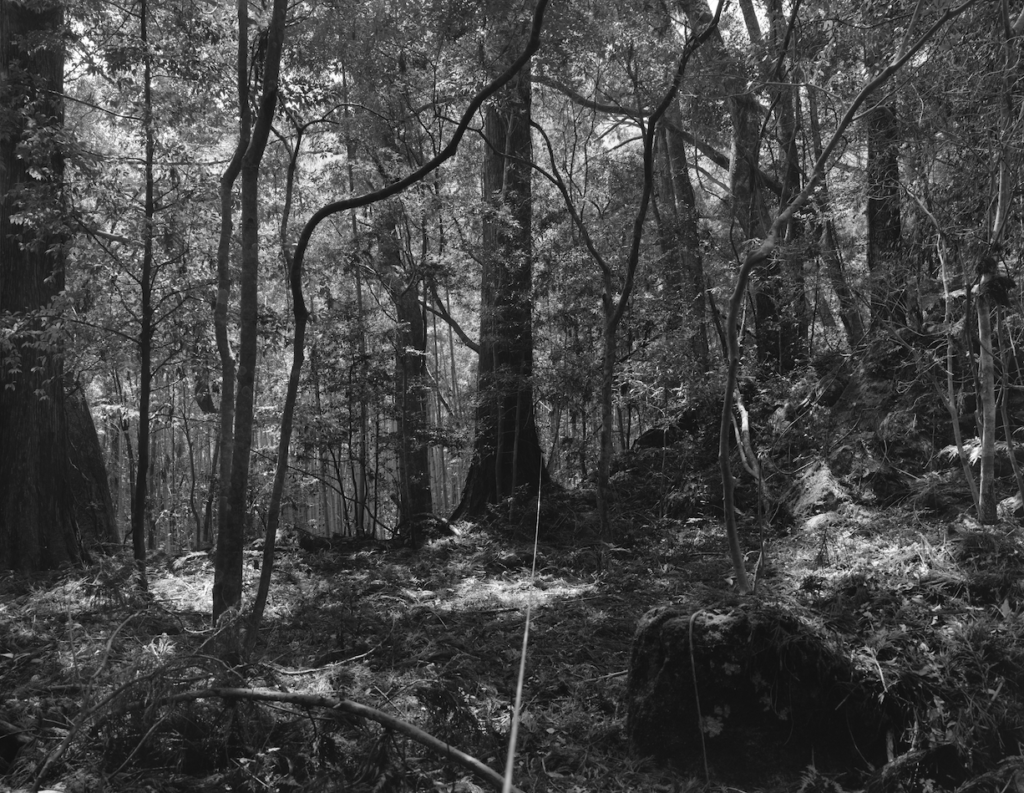Wataru Yamamoto Drawing a Line Through Dark Trees
Deep in the sacred forests of Kumano, the photographer investigates the space that hovers between man and nature.

Courtesy of Wataru Yamamoto
The forest in Kumano where the series Drawing a Line was shot is also home to the Kumano Kodo, an ancient pilgrimage site, criss-crossed by sacred trails. ‘The first time, I went alone, with the desire to become one with the woods. In the photographs, I had the feeling of living together with the forest, and this gave me a great sense of satisfaction’, writes Wataru Yamamoto in his book. By the time the photographer set out for his second photoshoot, however, the psychological and geographical landscape had changed, informed by the Fukushima earthquake and tsunami disaster of 2011.
Tokyo-based artist Wataru Yamamoto was born in 1983 in Tochigi. With his 2012 publication, the photographer places himself at the centre of his images with a series of self portraits taken in the heart of the Kumano forest, captured between October 2010 and March 2011. Taking nature as the primary focus within his work, Wataru Yamamoto is particularly interested in the unmediated relationship between man and nature, exemplified in this body of work.
Everything Shifts
Shot in high contrast black and white, the photographer is barely visible in the photographs, blending into the dense vegetation that surrounds him—the cable release, however, is an immediate indicator of his presence. Known for his experimental technique, the photographer’s cable release becomes both a central concept and a compositional element in the artist’s endeavour to depict the spaces between man and nature.
The photographer continued his work on natural environments in 2013 with a solo exhibition, Plane Tree Observations, at Yumiko Chiba Associates, an experiment in Kirlian photographs that were once used for observing the auras of plants.
Drawing a Line (2012), a photo book by Wataru Yamamoto, is published by MCV MCV.

Courtesy of Wataru Yamamoto

Courtesy of Wataru Yamamoto
TRENDING
-
A House from the Taisho Era Reveals Its Secrets
While visiting an abandoned building, Hamish Campbell discovered photographs the owner had taken of the place in the 1920s.

-
The Taboo-Breaking Erotica of Toshio Saeki
The master of the 1970s Japanese avant-garde reimagined his most iconic artworks for a limited box set with silkscreen artist Fumie Taniyama.

-
With Meisa Fujishiro, Tokyo's Nudes Stand Tall
In the series 'Sketches of Tokyo', the photographer revisits the genre by bringing it face to face with the capital's architecture.

-
Masahisa Fukase's Family Portraits
In his series ‘Family’, the photographer compiles surprising photos in which he questions death, the inescapable.

-
Hajime Sorayama's Futuristic Eroticism
The illustrator is the pioneer for a form of hyperrealism that combines sensuality and technology and depicts sexualised robots.





